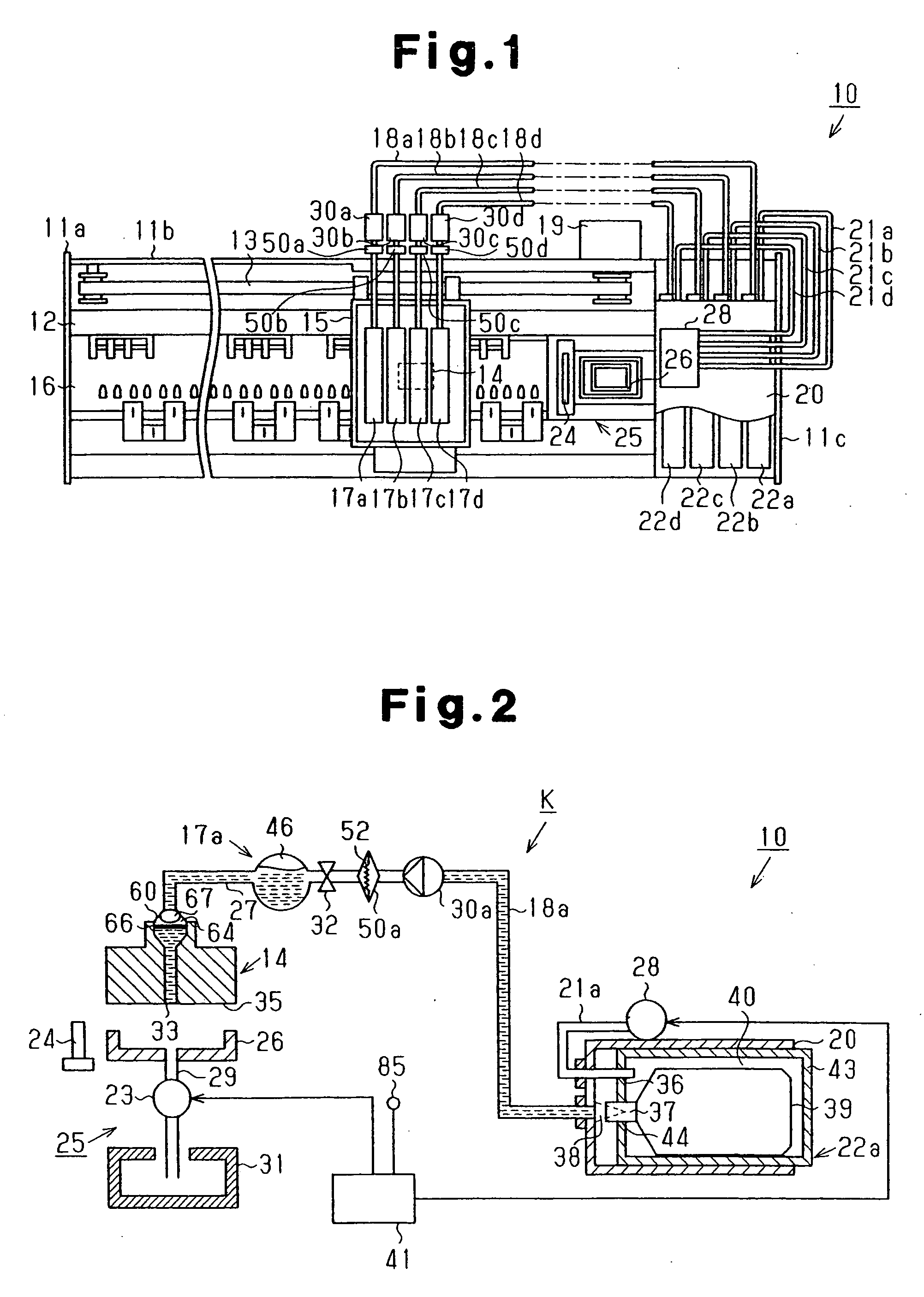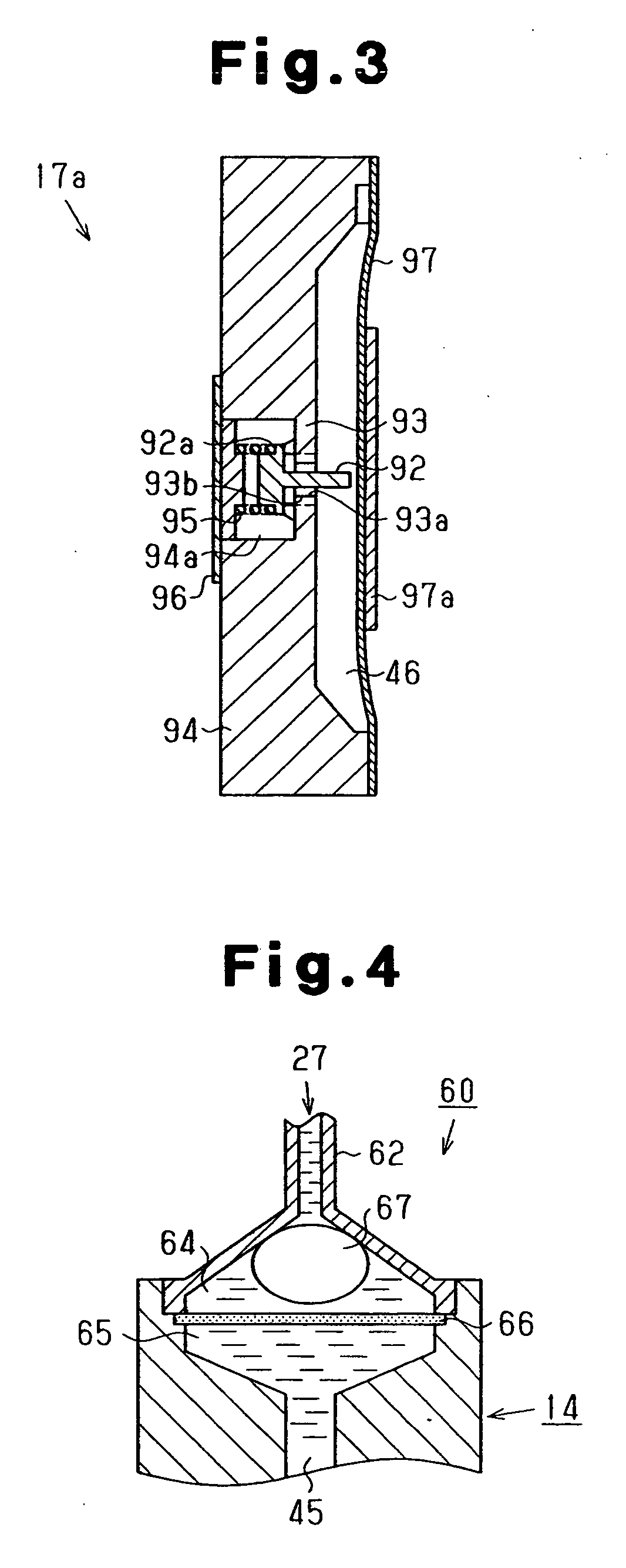Liquid ejection apparatus and liquid filling method for liquid ejection apparatus
a liquid ejection and liquid filling technology, applied in printing and other directions, can solve the problems of difficult to remove bubbles (an air layer) difficult to completely fill the supply line with liquid, and difficult to remove bubbles from the enlarged portion. , to achieve the effect of efficient liquid filling
- Summary
- Abstract
- Description
- Claims
- Application Information
AI Technical Summary
Benefits of technology
Problems solved by technology
Method used
Image
Examples
second embodiment
[0083] A second embodiment of the present invention will hereafter be explained with reference to FIG. 7. The mechanical configuration of the second embodiment is identical with that of the first embodiment. Same or like reference numerals are given to parts of the second embodiment that are the same as or like corresponding parts of the first embodiment. Description thereof thus will be omitted. The second embodiment is different from the first embodiment in terms of the second intense suction.
[0084] More specifically, in the first intense suction of the second embodiment, the controller 41 controls the suction pump 23 at a suction speed V1 that is equal to that of the first intense suction of the first embodiment. The suction pump 23 is continuously operated. Contrastingly, in the second intense suction, the controller 41 controls and continuously operates the suction pump 23 at a suction speed V2 (1) that is lower than the speed V1 of the first intense suction.
[0085] The time (...
PUM
 Login to View More
Login to View More Abstract
Description
Claims
Application Information
 Login to View More
Login to View More - R&D
- Intellectual Property
- Life Sciences
- Materials
- Tech Scout
- Unparalleled Data Quality
- Higher Quality Content
- 60% Fewer Hallucinations
Browse by: Latest US Patents, China's latest patents, Technical Efficacy Thesaurus, Application Domain, Technology Topic, Popular Technical Reports.
© 2025 PatSnap. All rights reserved.Legal|Privacy policy|Modern Slavery Act Transparency Statement|Sitemap|About US| Contact US: help@patsnap.com



